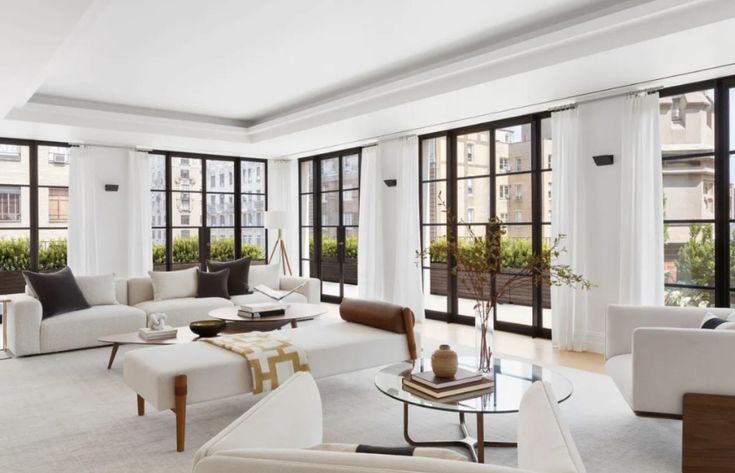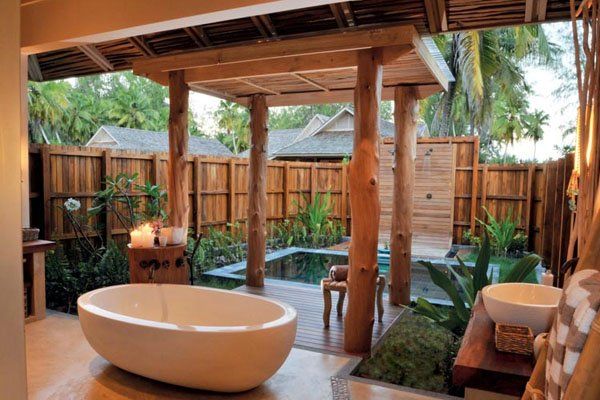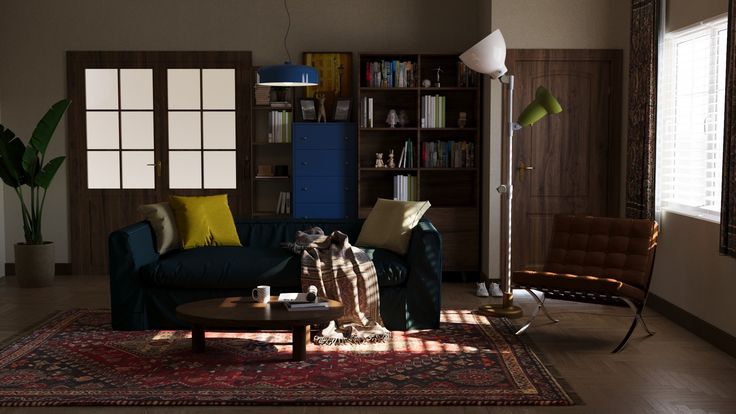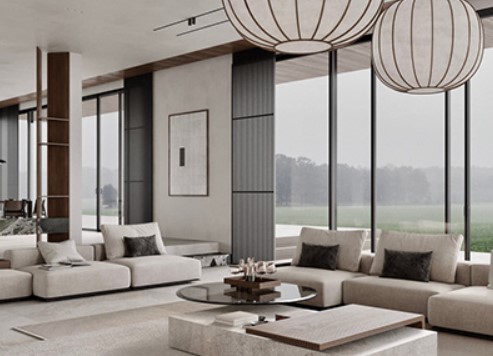How to Incorporate Smart Technology into Modern Home Design
How to Incorporate Smart Technology into Modern Home Design – In recent years, smart technology has transformed the way we live, and its influence is evident in modern home design. From voice-controlled systems to energy-saving solutions, the integration of smart technology not only enhances convenience but also makes homes more efficient, secure, and sustainable. If you’re looking to blend cutting-edge technology with contemporary aesthetics, here’s a guide on how to incorporate smart technology into your modern home design.

1. Start with a Smart Hub
A smart home hub is the brain of your home’s technology system. It connects all your smart devices, from thermostats and lights to security cameras and entertainment systems, into one centralized control unit. Popular smart hubs include Amazon Alexa, Google Nest, and Apple HomeKit.
- Design Consideration: When choosing a smart hub, ensure it matches the interior style of your home. For instance, a sleek, minimalist device like the Amazon Echo can blend seamlessly with a modern design. The hub should be placed in a central location, such as the living room or kitchen, for ease of access and control.
2. Smart Lighting: Energy Efficiency Meets Aesthetic Appeal
Lighting is a key aspect of modern home design, and with smart technology, you can take it to the next level. Smart lighting systems allow you to control the brightness, color, and schedule of your lights, all from your smartphone or voice commands.
- Integration Ideas: Consider using smart bulbs that adjust to your mood or time of day. For example, during the day, you can use bright white lights, and in the evening, switch to warm, dimmed lights to create a cozy ambiance.
- Energy Saving: Many smart lighting systems have energy-saving features, allowing you to schedule lights to turn off automatically or dim when not in use.
- Design Tip: Choose fixtures that align with your design aesthetic. Sleek, modern fixtures with clean lines complement contemporary interiors.
3. Smart Thermostats: Comfort and Efficiency
Smart thermostats are one of the most practical and efficient additions to any modern home. Devices like the Nest Learning Thermostat or Ecobee can learn your preferences and adjust temperatures accordingly, ensuring comfort while saving energy.
- Design Consideration: A smart thermostat can be subtly integrated into your home’s design. Opt for a model that blends with your home’s aesthetic, or mount it on a wall where it is accessible but unobtrusive. Many smart thermostats feature minimalist designs that align well with modern interiors.
- Benefits: By programming your thermostat to adjust when you are not at home, you can reduce energy waste and lower utility bills.
4. Smart Security Systems for Peace of Mind
Smart home security systems provide advanced protection and control over your home’s safety. These systems include cameras, motion detectors, doorbell cameras, and even smart locks, all of which can be managed through a smartphone or smart hub.
- Integration Ideas: A smart doorbell like Ring allows you to see visitors from anywhere in the world and even communicate with them remotely. Pair this with smart locks that allow keyless entry and remote access to enhance security and convenience.
- Privacy and Security: Look for systems with encrypted connections to ensure that your data is secure.
- Design Tip: Hide cameras and sensors in furniture or decor to maintain the aesthetics of your home. Smart security devices are available in sleek, compact designs that fit seamlessly into modern interiors.
5. Voice-Controlled Assistants: The Ultimate Convenience
Voice assistants like Amazon Alexa, Google Assistant, and Apple Siri have become household staples. These devices can control everything from lighting and temperature to entertainment systems and even kitchen appliances.
- Integration Ideas: Place voice assistants in common areas like the kitchen or living room, where you’ll use them most. Their design is typically modern and can fit into various home styles.
- Voice Control for Everyday Tasks: Use voice commands to adjust the lights, change the music, or control your thermostat without ever leaving your seat.

6. Smart Appliances: The Future of Cooking and Cleaning
Smart kitchen appliances are revolutionizing the way we cook and clean. From refrigerators that track groceries to ovens that can be preheated remotely, these appliances save time and add an extra layer of convenience to the kitchen.
- Integration Ideas: A smart refrigerator can tell you when you’re low on items, order groceries for you, and even suggest recipes based on what’s inside. Smart ovens allow you to control temperature and cooking time remotely, while smart dishwashers notify you when the cycle is complete.
- Design Tip: Choose appliances with clean, modern designs that match your kitchen’s aesthetic. Stainless steel and minimalist designs are popular in contemporary homes.
7. Smart Entertainment Systems: Immerse in Technology
Smart technology can also enhance your entertainment experience. From voice-controlled TVs to immersive sound systems, modern home entertainment has never been more advanced.
- Integration Ideas: Install smart TVs with built-in streaming capabilities and voice assistants for seamless control. Pair your TV with a smart sound system like Sonos, which offers superior sound quality and integration with other smart devices.
- Design Tip: Hide cables and speakers within walls or furniture for a sleek and clean look. Choose sound systems that blend with your room’s design.
8. Smart Windows: Natural Light and Energy Efficiency
Smart windows offer a unique way to combine technology with modern design. These windows can automatically adjust their tint based on the amount of sunlight, reducing glare and improving energy efficiency.
- Integration Ideas: Consider installing smart windows that block UV rays during the hottest part of the day, keeping your home cooler. You can control the tint of the windows through a smartphone app or automated settings.
- Design Tip: Smart windows can be seamlessly integrated into contemporary home designs, offering a modern, high-tech look without compromising natural light or energy efficiency.

9. Smart Gardens: Eco-Friendly Living
For those who love gardening, smart garden systems offer an innovative solution. These systems can water plants, monitor soil conditions, and even provide nutrients to ensure optimal growth.
- Integration Ideas: Use smart irrigation systems that adjust watering schedules based on weather conditions, ensuring your garden gets the right amount of water without wasting resources.
- Design Tip: Consider integrating smart garden systems into your outdoor spaces. Use sleek, unobtrusive designs that blend with your landscaping.
10. Energy Management: Control Your Energy Use
Smart energy management systems are designed to help you monitor and reduce your energy consumption. With smart plugs, power strips, and energy monitors, you can track your usage and make adjustments in real-time.
- Integration Ideas: Install smart plugs that can turn off appliances when not in use. You can also use energy monitoring systems that provide real-time data on your home’s energy consumption, helping you make smarter choices.
Conclusion
Incorporating smart technology into modern home design not only enhances the functionality of your living space but also brings a sense of convenience, comfort, and security. By integrating smart hubs, lighting, thermostats, security systems, and appliances, you can create a home that is not only visually appealing but also efficient and eco-friendly. As technology continues to evolve, the possibilities for smart homes are limitless. Embrace the future of living by blending smart technology with modern design for a home that truly works for you.





